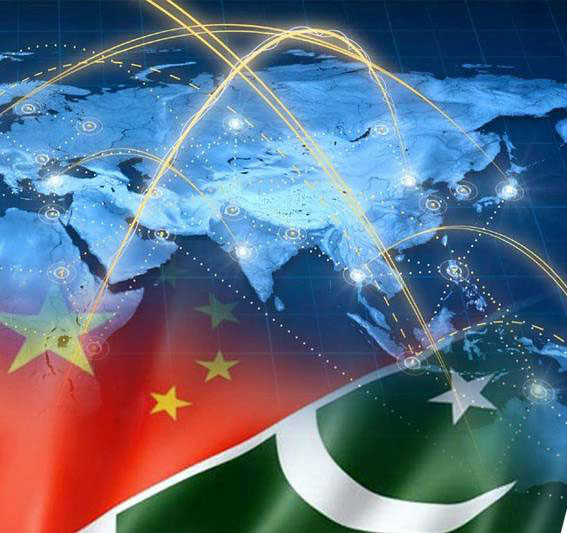Naveed Aman khan
CONTEMPORARY world would see huge impact of technological development on society and policy makers. Recent decades have seen a tremendous technological progress in computing and telecommunications. Pakistan is an important country in China’s One Belt One Road Initiative (OBOR). China-Pakistan Economic Corridor (CPEC) is a collection of infrastructure projects worth US $ 64 billion. These projects have a potential to bring significant changes to economic, social and financial levels within the country. Information technology plays an important role in reducing the distance which has potential to resolve many problems related to economic productivity, intellectual property rights, privacy, protection and affordability of and access to information. The geographical distribution of work is changing dramatically in contemporary times. For example, industries can outsource their manufacturing to other countries and telecommunications play a significant role in marketing, research and development while technology can enable the people of the two countries to take benefit from each other in various types of work and employment.
Through the development of different industrial and information technology parks under CPEC in Pakistan, there will be more freedom to firms to locate their economic activities, creating greater competition among regions in infrastructure, labour, capital and other resource markets. Social interaction in organizations will be improved by use of computers and communication technologies. The importance of distance will be reduced by computers and communication technology also favours telecommuting and has implications for the residence patterns of the citizens. As workers find that they can do most of their work at home rather than in a centralized workplace, the demand for homes in climatically and physically attractive regions would increase. Apart from industrial sector, information technology plays a momentous role in educational sector. This can affect the craft of teaching.
The role of an instructor is a supplier of services to the students, who might be regarded as its customers but a good teacher or a supervisor of students would play a role in motivating, encouraging, evaluating and developing students. Technological progress inevitably creates dependence on technology. Indeed the creation of vital infrastructure ensures dependence on that infrastructure. The world is now dependent on its transport, telephone and other infrastructures, it will be dependent on the emerging information infrastructure. China-Pakistan Economic Corridor Project is of great importance for both – China and Pakistan. China’s government is striving to consume its supporting role to build an environment for the open economic system and logistic system under the CPEC. It is considered as the corridor of peace, prosperity and development having potential for a promising future for Pakistan.
China and Pakistan have signed an Economic and Technical Cooperation Agreement as well as pledged to “China-Pakistan Joint Cotton Bio-Tech Laboratory” as part of CPEC. The two countries also pledged to establish the “China-Pakistan Joint Marine Research Centre” with State Oceanic Administration and Pakistan’s Ministry of Science and Technology. As part of the CPEC agreement, Pakistan and China have agreed to cooperate in the field of space research. In February 2016, the two countries agreed to establish the “Pak-China Science, Technology, Commerce and Logistic Park” near Islamabad at an estimated cost of US $1.5 billion. The Park will be situated on five hundred hectares, which will be provided by Pakistan to China’s Xinjiang Production and Construction Corps, with all investment expected to come from the Chinese side over the course of ten years. In May 2016, construction began on the US $ 44 million 820 kilometre long Pakistan-China Fibre Optic Project, an optical fibre cable that will enhance telecommunication in the Gilgit-Baltistan region while offering Pakistan a fifth route by which to transmit telecommunication traffic.
China will build US $1.5 billion worth National Science & Technology Park under CPEC in H-12 Islamabad near NUST. CPEC will uplift Pakistan’s economy through immense investment in various sectors such as industrial, agricultural, and technological. This development would transform the standard of living of Pakistani people and bring social change to the country. The China-Pakistan Economic Corridor (CPEC) is predicted to be the hub of technological and economic progress in Pakistan. Before its advent, Pakistan was facing serious economic issues and technology was nowhere near advancing. Now with its arrival, Pakistan has the chance to avail massive potential arising, especially in the technological sector. The establishment of IT parks and industrial zones will reduce tariffs encouraging firms to invest which will create competition in the entire region. As a result, the country will make progress swiftly in technology. Pakistan needs to focus on the successful completion of CPEC and industrial zones along it timely. (The writer is a freelance journalist)










